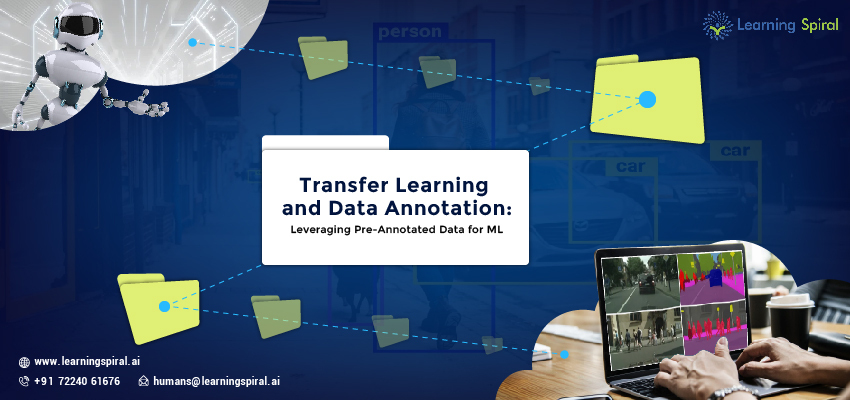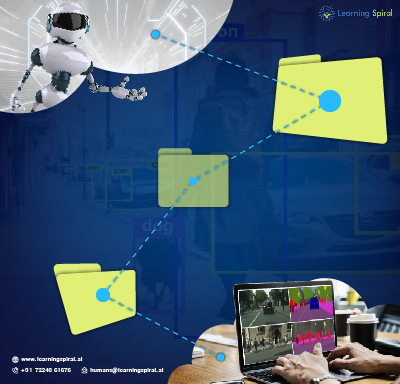
In the realm of machine learning, data is the supreme being. By annotating aka labeling data for image, text, video, or audio, one provides AI and ML ammunition to get any kind of task done accurately.
However, acquiring and meticulously labeling vast amounts of data can be a resource-intensive undertaking. This is where transfer learning steps in, offering a powerful approach to leverage pre-annotated data and accelerate your ML projects.
Let’s delve into the world of transfer learning, explore its synergy with data annotation, and unlock its potential for efficient and effective ML development.
The Data Issue:
Imagine training a complex facial recognition model from scratch. You would need millions of labeled images capturing diverse faces under various lighting, angles, and expressions. Gathering and annotating such a dataset would be a monumental task. What to do?

Transfer Learning to the Rescue:
Transfer learning offers a shortcut by leveraging knowledge gained from one task (usually a source task) to accelerate learning on a related task (target task). Think of it like training a student on basic math concepts before introducing them to complex algebra.
Similarly, pre-trained models on massive datasets like ImageNet (millions of labeled images) can be fine-tuned for your specific task with significantly less data.
Pre-annotated data serves as the foundation for pre-trained models. These models have already learned low-level visual features like edges, shapes, and textures from vast datasets. By fine-tuning these models on your smaller, task-specific dataset, you leverage the pre-existing knowledge, reducing the burden of extensive data annotation.
Benefits of the Synergy between Transfer Learning & Data Annotation:
- Reduced data requirements: Train models with less data, saving time, resources, and human effort.
- Faster development cycles: Accelerate project timelines by skipping the initial training phase of complex models.
- Improved performance: Leverage the knowledge embedded in pre-trained models to potentially achieve better accuracy on your task.
- Domain adaptation: Apply models trained on general datasets to specialized domains with limited data.
Applications in Action:
Transfer learning and pre-annotated data find applications in diverse fields:
- Medical imaging: Analyze medical scans for disease detection using pre-trained models on generic image datasets.
- Self-driving cars: Train autonomous vehicles to recognize objects and navigate roads by leveraging pre-annotated datasets from real-world driving scenarios.
- Natural language processing: Enhance sentiment analysis or text summarization tasks by fine-tuning pre-trained language models on domain-specific text data.
Considerations and Challenges:
While powerful, transfer learning isn’t a magic bullet. Here are some points to consider:
- Task similarity: The source and target tasks need to be sufficiently related for effective knowledge transfer.
- Data quality: The quality of pre-annotated data significantly impacts the model’s performance.
- Fine-tuning expertise: Expertise in selecting and fine-tuning pre-trained models is crucial for optimal results.
The Future of Pre-Annotated Data:
As the field of ML evolves, so does the availability and quality of pre-annotated data. We can expect:
- More diverse and specialized datasets: Covering various domains and niche applications.
- Improved annotation tools and techniques: Enhancing accuracy, efficiency, and scalability.
- Emerging pre-trained models for complex tasks: Speech recognition, natural language understanding, and more.
Conclusion:
Transfer learning and pre-annotated data represent a game-changer for ML development. By leveraging pre-existing knowledge and reducing data annotation burdens, they empower developers to build powerful models faster and more efficiently.
As pre-annotated data continues to evolve and diversify, the potential for groundbreaking ML applications across various industries becomes even more exciting. So, embrace the power of transfer learning and let pre-annotated data fuel your next innovative ML project!

